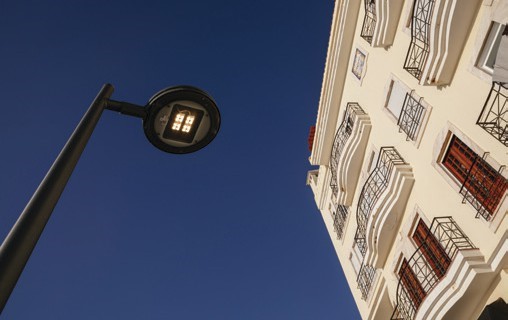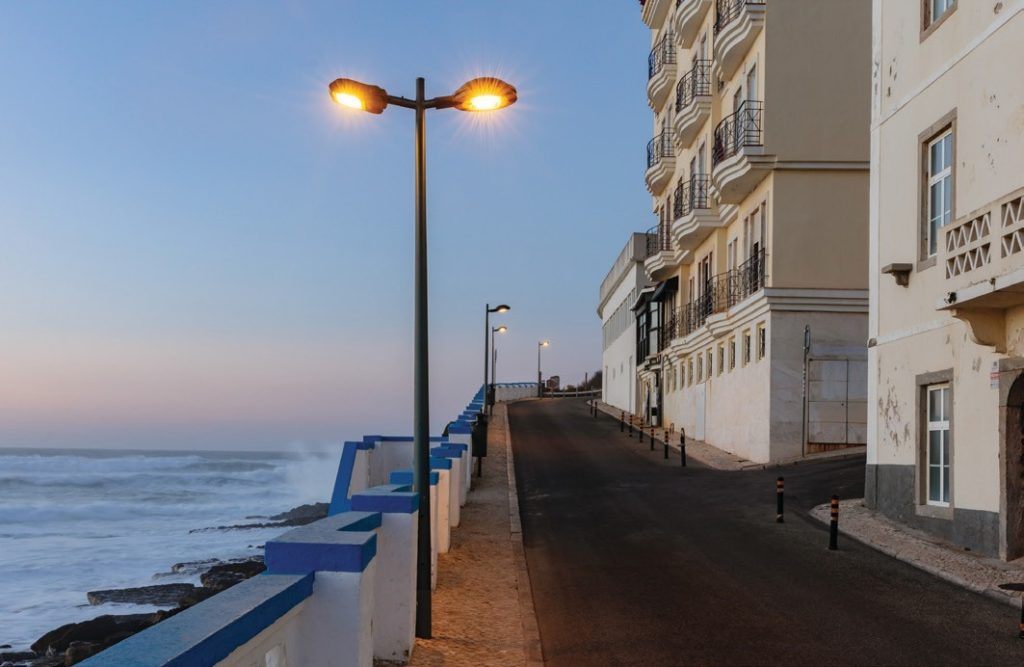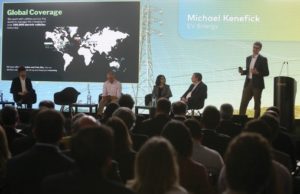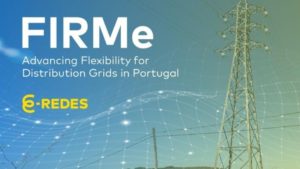Published: 5. 6. 2024
As a facilitator of the Energy Transition, E-REDES is focused on promoting an increasingly technological, efficient, and sustainable distribution of electricity by formalising cooperation between entities in favor of sustainable development, intelligent use of energy and its interface with the environment. With this as its goal, E-REDES wants to be at the forefront of initiatives that promote greater integration of renewable energy, empower consumers to play a more central role or facilitate new business models.
In a marketplace all the parties involved need to be able to communicate before they can engage in an economic transaction. As flexibility markets are virtual markets for services, this implies that, in practice, each of these stakeholders needs to implement additional layers of data management to ensure communication with a market platform. Given the current immaturity of flexibility markets there is a great diversity in technologies and methods, which implies that the replicability of different communication solutions is limited. This increases the risk of being trapped in a specific market platform and increases the costs of entering the flexibility market. The solution to this problem was developed in the EUniversal project.
EUniversal connected partners from eight countries
From 2020 to 2023, E-REDES led the EUniversal project, funded by the European Union and involving 19 partners from 8 countries, which aims to develop a universal approach to the use of flexibility by Distribution System Operators (DSOs) and their interaction with the new flexibility markets, made possible by the development of the Universal Market Enabling Interface (UMEI) concept – a unique approach to promoting interoperability across Europe. UMEI represents an innovative, adaptable, modular, and evolutionary approach that will be the basis for the development of innovative services, market solutions and, above all, the implementation of real mechanisms for the active participation of consumers, prosumers, and energy communities in the energy transition.
Before they can reap the benefits of flexibility, DSOs need to adapt the planning and operation of their networks to be able to interact with the new market ecosystem and adapt to flexibility services as an alternative network asset. This means, among other things, that they will be able to predict the development of the system and quantify the amount of flexibility needed at different voltage levels. This is a serious challenge, especially for low-voltage networks, where most flexible power sources will be connected. EUniversal proposes a set of tools, called. A DSO toolbox that integrates innovative planning and operational tools designed specifically for distribution networks, enabling a smarter and more resilient distribution network.
The DSO toolbox integrates tools designed to support DSOs in all phases of the operation processes: i. Observability of the medium and low voltage network (forecast, phase mapping, topology estimation) ii. Quantification of flexibility needs, iii. Selecting the optimum supply, and iv. Mobilising flexibility for planned maintenance. In addition, it also integrates phases of the planning process, including investment authorisation, and improving resilience and reliability considering available flexibility.
Both the UMEI and the DSO toolbox were tested in 3 complementary demonstrators in Portugal, Germany, and Poland. EUniversal test sites in Germany, Poland and Portugal target specific goals in grid transformation. The Portuguese site allows researchers to assess needs in different areas while exploring medium voltage (MV) and low voltage (LV) network regulation. Resilience planning in a flexible market is an additional important component of the demo. The German site focussed on LV networks. The pilot examines the use of flexible resources for congestion management. Short-term congestion is a concern when integrating flexible energy sources, but mid and long-term congestion planning are important too. EUniversal considers seasonal effects, increases in renewable energy sources and new demands on electricity. The focus of the Polish pilot is dynamic line rating (DLR) and the new flexstation. The goal of DLR is to maximise load when conditions permit. The role of the flexstation is to automate control of technical constraints at the secondary substation level while using flexibility.


Fig. 1.: The E-REDES goal is 100% coverage of public lighting with LED technology by 2027. Fig. 2: E-REDES is the largest European player in the field of public lighting networks with almost three million luminaires.
Flexibility is essential in the paradigm shift in the energy sector
In line with this commitment to the energy transition, E-REDES has launched FIRMe, the pilot project for the first flexibility market in Portugal. With FIRMe, the distribution network operator gives potential suppliers of flexibility services – producers and consumers – new business opportunities within the energy chain. E-REDES identifies the needs of the electricity grid and gives new suppliers the chance to respond to them, without overloading the grid or its investments. In practice, suppliers can bid to participate in the same way as in a common auction, and the gain is in the business opportunity and in the contribution to speeding up the energy transition.
The first auction of local flexibility in the energy market in Portugal closed with the interest of 21 service providers for all eight opportunities made available. 93 per cent of registered assets participated, totalling 43 qualified assets, with bids totalling 36MW, distributed among 36 consumer installations with direct participation, two installations via an aggregator, three producers and two storage installations. There were 632 bids in the different service windows available, surpassing the results achieved in the UK and French markets in the first auctions held in their geographies.
In the eight pilot zones, there are three types of products, Dynamic, Secure and Restore, which are characterised by different levels of predictability of extraordinary needs on the part of the electricity network and which correspond to different types of benefits. Dynamic cases are more predictable and correspond to the use of flexibility during periods of grid maintenance work. In Secure, this forecast is made by estimate and the service used is for managing congestion at certain points in the network. As for Restore, there is no predictability, and these are services used to support the re-establishment of the network in the face of sporadic events resulting from network failures.
E-REDES proposes to accept 82% of the capacity offered, with all competitive offers responding most favourably to the network’s needs. By the end of 2023, contracts with flexibility service providers must be validated, regulatory pilot proposals formalised, qualification tests carried out with flexibility service providers and contracts signed. The use of flexibility contracts is expected to start in January 2024.


Fig. 3.: Presentation of the project for the FIRMe flexibility market.
It’s imperative to invest in smart grids
Flexibility requires energy distribution networks to be increasingly intelligent to accommodate all the new technology. E-REDES is currently Europe’s largest player in public lighting networks, with almost three million luminaires, and is responsible for around 85% of the public lighting network in mainland Portugal. According to a 2021 report by the European Commission’s Joint Research Centre, Portugal is in line or more advanced than other European countries. E-REDES’ investment in IP has been significant, from the transition to LED to the introduction of remote management and control, as well as preparing the use of the infrastructure for smart city services.
In 2016, the company launched an annual investment campaign in the transition to LEDs, which can reduce IP consumption by more than 70 per cent in some cases. Now, the company is installing just over 200,000 LEDs a year, for an annual investment of more than 20 million euros. The aim is to reach 2027 with 100 per cent of the public lighting stock converted to LED. At the end of this transition to 100 per cent LED, E-REDES predicts annual savings of 100 million euros on municipal bills, compared to the pre-LED situation. Another advantage will be the reduction of the carbon footprint, with 140,000 fewer tonnes of CO2 emissions, a key figure for an effective energy transition. As far as relations with municipalities are concerned, of which there are 278 in the case of E-REDES, it is already possible to interact with E-REDES in a completely digital way, with the possibility of monitoring and managing all issues related to IP and other services via the ‘Municipalities Portal’. The digital tools thus make it possible to reduce bureaucracy in relations and maintenance of the lighting circuit, facilitating the relationship between municipalities and the Distribution Network Operator.
Data as the driving force behind the energy transition
It is essential to speed up this energy transition because the data, information, and knowledge we have been able to gather on this global issue indicate that we are not changing fast enough. To move in the right direction and accelerate the energy transition, it is urgent to have robust and reliable information and knowledge that will drive local solutions, whether they are spearheaded by each of us as consumers, by companies or by local authorities. This is one of the reasons why E-REDES has published, on its new ‘Open Data’ portal, a large amount of the data it collects in its activity, aggregated at county, parish or even postcode level. This data provides a unique and in-depth view of the national territory, facilitating comparative analyses between areas of the same city or between the various regions of the country, with enormous potential for accelerating knowledge, innovation, efficiency, and decisions on the path to be taken.
Giving society the tools to navigate the energy transition
It is not the intention of E-REDES to use all the insights that can be gained from the data collected. The value of this knowledge is mostly outside the scope of E-REDES’ activities as an electricity distribution network operator. It will be necessary for other actors – academia, businesses, municipalities – to work with this data and turn it into useful knowledge for their own purposes. E-REDES is actively participating in the energy transformation by making available data that can accelerate the process.
Source: e-REDES, Catarina Tavares Machado
